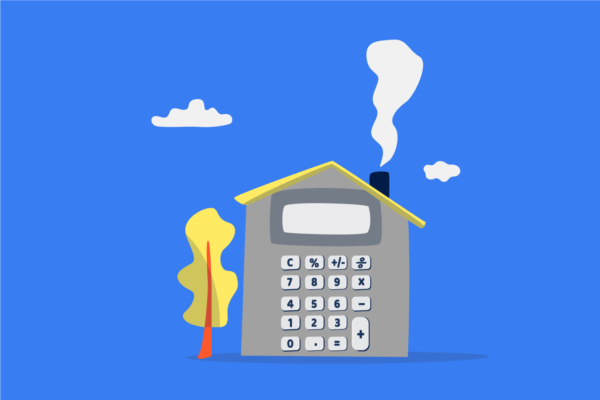
What Is the Mortgage Par Rate and How Can It Benefit You?

When shopping for a home loan, you’ll come across all sorts of mortgage jargon. One term that often pops up is the mortgage par rate—but what exactly does it mean, and how can it benefit you as a borrower? Here, we break it down for you in simple terms.
What is the mortgage par rate?
The mortgage par rate is the base interest rate a lender offers before any adjustments—like discount points or lender credits—are applied. It’s the rate at which a loan is priced with no added cost to lower the rate and no credit to raise it.
Think of the par rate as a starting point when presenting your loan options. While you might not choose the par rate itself, understanding where it falls in the pricing structure helps you compare options and make decisions that align with your goals—whether that’s lowering your monthly payment or minimizing upfront costs.
How do mortgage par rates work?
When lenders offer you a mortgage, they don’t just offer one rate. Instead, they give you a range of rate options, and each option comes with a different cost.
Think of it like a sliding scale:
- A lower interest rate usually costs you more upfront. You’ll pay discount points to get that lower rate. That’s a higher pricing level— in other words, you’re paying more now to save later.
- A higher interest rate may come with a lender credit, which helps you cover closing costs. That’s a lower pricing level for you up front, but you’ll pay more in interest over time.
- The par rate is the rate at which there’s no upfront cost or credit. This is the neutral pricing level.
The par rate is simply the interest rate that doesn’t add to or subtract from your upfront costs. It’s not fixed, and it doesn’t exist in a vacuum. Instead, it’s part of a broader rate-pricing structure that’s influenced by your financial profile and current market conditions.
From Mortgages to Home Equity Loans
Our local, award-winning lending team is ready to help you begin today.
How can the mortgage par rate be adjusted?
Let’s dive a little deeper into the two ways that your mortgage par rate can be adjusted— discount points and lender credits.
1. Paying for Discount Points
If you want a lower interest rate on your loan, there are options. One of the primary ways to lower your interest rate is to pay for discount points—also known as mortgage points—upfront. One discount point typically costs 1% of the loan amount and can reduce your rate by about 0.25%.
For example, on a $150,000 home loan, paying 1.25 points ($1,875) up front could reduce your interest rate from 6.5% to 6.1875%. This reduction lowers your monthly payment from $948.10 to $922.74, resulting in savings of $25.36 per month. Over a 30-year loan (360 months), this adds up to a total savings of $9,129.60 in interest payments.
By purchasing these mortgage points, borrowers effectively prepay interest, reducing the overall cost of the loan. This strategy benefits those who plan to stay in their home long-term, as the upfront expense will eventually be offset by the lower monthly payments.
2. Accepting a Higher Interest Rate for Lender Credits
On the other hand, if you need to save money at the time of purchasing your home, you can get help covering closing costs by opting for a higher interest rate in exchange for lender credits. This reduces your upfront expenses but results in a higher long-term cost. Some special credit programs may also offer assistance, such as special purpose credit programs (SPCPs) aimed at helping underserved borrowers.
Lender credits work as a trade-off: while they minimize initial expenses, they increase the total interest paid over time. This option is useful for borrowers who need to limit upfront spending but can afford slightly higher monthly mortgage payments.
What factors influence mortgage rates?
Factors like your credit score, loan type, and loan amount affect the range of rate and pricing combinations a lender is willing to offer. These details don’t determine one specific rate, but they shape what pricing options are available to you.
1. Credit Score and Credit Profile
Your credit score and credit history are crucial indicators of your financial reliability. A higher credit score can secure you a lower annual percentage rate (APR), while a history of missed payments or high debt levels may lead to a higher rate.
2. Type of Loan and Property
Different home loan programs, such as FHA loans, VA loans, and conventional loans, have varying rates. Similarly, mortgage rates for investment properties or multifamily residences are typically higher than those for primary single-family homes, as they carry greater lending risk.
3. Market Conditions and the Federal Reserve
Economic trends and Federal Reserve policies influence interest rates. When inflation rises or the Fed increases interest rates, mortgage par rates generally follow suit, making borrowing more expensive.
4. Loan-to-Value Ratio
Your loan-to-value ratio compares the size of your mortgage loan to the value of the property you’re purchasing. A lower LTV—meaning you’re making a larger down payment—typically results in a better interest rate, as it reduces the lender’s risk. Higher LTVs may lead to higher rates or require private mortgage insurance (PMI), especially for conventional loans.
5. Loan Term and Amount
Finally, the length of your loan and the amount you borrow will affect your par rate. Shorter-term loans, such as 15-year mortgages, often have lower interest rates than 30-year fixed mortgages. Additionally, borrowing a larger loan amount may impact the rate you receive.
Why does the mortgage par rate matter to you?
Understanding par mortgage rates helps you make informed decisions when comparing loans. Here’s how it can benefit you:
- It helps you shop around. Comparing par rates from multiple lenders ensures you get the best deal.
- It impacts your monthly mortgage payment. Even a small difference in your interest rate can drastically affect your long-term costs.
- It impacts how much you pay over the life of the loan. Choosing the right rate now can save you thousands over the years.
- It allows flexibility in closing costs. You can decide whether to pay upfront for a lower rate or reduce costs with lender credits.
How can I estimate my par rate?
While only a mortgage lender can tell you your specific par rate, borrowers can estimate their rate by researching standard market rates based on the type of loan sought and lender offerings in your area. Using a mortgage calculator, you can then compare how different rates impact your monthly mortgage payment.
Final Thoughts
The mortgage par rate is the foundation of your home loan’s interest rate. Knowing how it works—and how you can adjust it to fit your specific needs—empowers you to make smarter borrowing decisions.
Whether you opt for a lower rate with discount points or choose lender credits to reduce closing costs, understanding par mortgage rates can help you maximize savings and secure the best loan for your needs.




